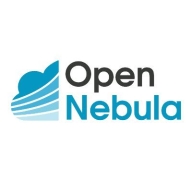


Oracle Enterprise Manager Cloud Control and OpenNebula are contenders in the cloud management domain. Oracle holds the edge with its feature-rich offerings, while OpenNebula is favored for its simplicity and flexibility.
Features: Oracle Enterprise Manager Cloud Control is known for its comprehensive database management, real-time monitoring, and centralized administration. It supports various Oracle products, providing detailed insights into performance. OpenNebula stands out for its ease of use, stability, and customization. It effectively manages virtual machines across different hypervisors and offers an API for extended functionalities.
Room for Improvement: Oracle Enterprise Manager Cloud Control needs a simplified setup and better compatibility with non-Oracle systems. Enhanced documentation and integration with more environments are also required. OpenNebula benefits from improved documentation and API functionality. The addition of more cloud features would streamline deployments in diverse environments.
Ease of Deployment and Customer Service: Oracle Enterprise Manager Cloud Control provides extensive support, facilitating complex hybrid cloud deployments. Despite its robust technical resources, users desire quicker support responses. OpenNebula, mainly used in on-premises setups, is easy to implement with less support dependency, but responsiveness improvements could enhance user experience.
Pricing and ROI: Oracle Enterprise Manager Cloud Control is more costly, making it suitable for large enterprises within Oracle's ecosystem. OpenNebula offers a cheaper alternative through its open-source model, making it accessible for organizations aiming to reduce spending, with its free community and low-cost enterprise versions ensuring flexibility and functionality.



IBM Turbonomic offers automation, planning, and right-sizing recommendations to streamline resource management, improve efficiencies, and optimize costs across virtualized environments and cloud platforms.
IBM Turbonomic is valued for its capability to optimize resource allocation and monitor virtual environments efficiently. It facilitates automated decision-making in VM sizing, load balancing, and cost optimization for both on-premises and cloud deployments. Users can leverage insights for workload placement, ensure peak performance assurance, and effectively right-size across VMware and Azure. The ongoing transition to HTML5 aims to improve visual and navigational ease, while expanded reporting features are anticipated. Opportunities for improved training, documentation, and integrations enhance platform usability and functionality.
What Are the Key Features?In finance, IBM Turbonomic aids in maintaining platform efficiency during market fluctuations. Healthcare organizations leverage its capability for resource optimization during high-demand periods to enhance patient care support. Retailers use it for planning in peak seasons, ensuring resources align with fluctuating demand to maintain performance continuity.
OpenNebula provides the most simple but feature-rich and flexible solution for the comprehensive management of virtualized data centers to enable private, public and hybrid IaaS clouds. OpenNebula interoperability makes cloud an evolution by leveraging existing IT assets, protecting your investments, and avoiding vendor lock-in.
OpenNebula is a turnkey enterprise-ready solution that includes all the features needed to provide an on-premises (private) cloud offering, and to offer public cloud services.
Oracle Enterprise Manager is Oracle's integrated enterprise information technology (IT) management product line, which provides the industry's only complete, integrated, and business-driven enterprise cloud management solution. Oracle Enterprise Manager creates business value for IT by leveraging the built-in management capabilities of the Oracle stack for traditional and cloud environments, enabling customers to achieve unprecedented efficiency gains while dramatically increasing service levels.
We monitor all Cloud Management reviews to prevent fraudulent reviews and keep review quality high. We do not post reviews by company employees or direct competitors. We validate each review for authenticity via cross-reference with LinkedIn, and personal follow-up with the reviewer when necessary.